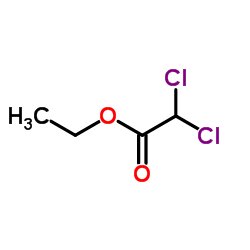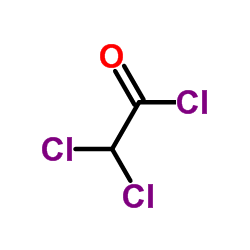Florfenicol

Florfenicol structure
|
Common Name | Florfenicol | ||
|---|---|---|---|---|
| CAS Number | 73231-34-2 | Molecular Weight | 358.213 | |
| Density | 1.5±0.1 g/cm3 | Boiling Point | 617.5±55.0 °C at 760 mmHg | |
| Molecular Formula | C12H14Cl2FNO4S | Melting Point | 153 °C | |
| MSDS | Chinese USA | Flash Point | 327.3±31.5 °C | |
Use of FlorfenicolFlorfenicol, a commonly used veterinary antibiotic, is currently indicated for the treatment of bovine respiratory disease, and also used in aquaculture for the control of enteric septicemia in catfish. Florfenicol can induce early embryonic death in eggs, with an LC50 of 1.07 μg/g. |
| Name | florfenicol |
|---|---|
| Synonym | More Synonyms |
| Description | Florfenicol, a commonly used veterinary antibiotic, is currently indicated for the treatment of bovine respiratory disease, and also used in aquaculture for the control of enteric septicemia in catfish. Florfenicol can induce early embryonic death in eggs, with an LC50 of 1.07 μg/g. |
|---|---|
| Related Catalog | |
| References |
| Density | 1.5±0.1 g/cm3 |
|---|---|
| Boiling Point | 617.5±55.0 °C at 760 mmHg |
| Melting Point | 153 °C |
| Molecular Formula | C12H14Cl2FNO4S |
| Molecular Weight | 358.213 |
| Flash Point | 327.3±31.5 °C |
| Exact Mass | 357.000458 |
| PSA | 91.85000 |
| LogP | -0.12 |
| Vapour Pressure | 0.0±1.9 mmHg at 25°C |
| Index of Refraction | 1.548 |
| Storage condition | 0-6°C |
|
Material Safety Data Sheet
Section1. Identification of the substance Product Name: Florfenicol Synonyms: Section2. Hazards identification Harmful by inhalation, in contact with skin, and if swallowed. Section3. Composition/information on ingredients. Ingredient name:Florfenicol CAS number:73231-34-2 Section4. First aid measures Skin contact:Immediately wash skin with copious amounts of water for at least 15 minutes while removing contaminated clothing and shoes. If irritation persists, seek medical attention. Eye contact:Immediately wash skin with copious amounts of water for at least 15 minutes. Assure adequate flushing of the eyes by separating the eyelids with fingers. If irritation persists, seek medical attention. Inhalation:Remove to fresh air. In severe cases or if symptoms persist, seek medical attention. Ingestion:Wash out mouth with copious amounts of water for at least 15 minutes. Seek medical attention. Section5. Fire fighting measures In the event of a fire involving this material, alone or in combination with other materials, use dry powder or carbon dioxide extinguishers. Protective clothing and self-contained breathing apparatus should be worn. Section6. Accidental release measures Personal precautions: Wear suitable personal protective equipment which performs satisfactorily and meets local/state/national standards. Respiratory precaution:Wear approved mask/respirator Hand precaution:Wear suitable gloves/gauntlets Skin protection:Wear suitable protective clothing Eye protection:Wear suitable eye protection Methods for cleaning up: Mix with sand or similar inert absorbent material, sweep up and keep in a tightly closed container for disposal. See section 12. Environmental precautions: Do not allow material to enter drains or water courses. Section7. Handling and storage Handling:This product should be handled only by, or under the close supervision of, those properly qualified in the handling and use of potentially hazardous chemicals, who should take into account the fire, health and chemical hazard data given on this sheet. Store in closed vessels, refrigerated. Storage: Section8. Exposure Controls / Personal protection Engineering Controls: Use only in a chemical fume hood. Personal protective equipment: Wear laboratory clothing, chemical-resistant gloves and safety goggles. General hydiene measures: Wash thoroughly after handling. Wash contaminated clothing before reuse. Section9. Physical and chemical properties Appearance:Not specified Boiling point:No data No data Melting point: Flash point:No data Density:No data Molecular formula:C12H14Cl2FNO4S Molecular weight:358.2 Section10. Stability and reactivity Conditions to avoid: Heat, flames and sparks. Materials to avoid: Oxidizing agents. Possible hazardous combustion products: Carbon monoxide, nitrogen oxides, hydrogen chloride, hydrogen fluoride, sulfur oxides. Section11. Toxicological information No data. Section12. Ecological information No data. Section13. Disposal consideration Arrange disposal as special waste, by licensed disposal company, in consultation with local waste disposal authority, in accordance with national and regional regulations. Section14. Transportation information Non-harzardous for air and ground transportation. Section15. Regulatory information No chemicals in this material are subject to the reporting requirements of SARA Title III, Section 302, or have known CAS numbers that exceed the threshold reporting levels established by SARA Title III, Section 313. SECTION 16 - ADDITIONAL INFORMATION N/A |
CHEMICAL IDENTIFICATION
HEALTH HAZARD DATAACUTE TOXICITY DATA
|
| Personal Protective Equipment | Eyeshields;Gloves;type N95 (US);type P1 (EN143) respirator filter |
|---|---|
| Hazard Codes | Xi: Irritant; |
| Risk Phrases | R36/37/38 |
| Safety Phrases | S26-S36 |
| RIDADR | NONH for all modes of transport |
| WGK Germany | 3 |
| HS Code | 2930909090 |
| HS Code | 2930909090 |
|---|---|
| Summary | 2930909090. other organo-sulphur compounds. VAT:17.0%. Tax rebate rate:13.0%. . MFN tariff:6.5%. General tariff:30.0% |
|
Multiresidue method for the determination of pharmacologically active substances in egg and honey using a continuous solid-phase extraction system and gas chromatography-mass spectrometry.
Food Chem. 178 , 63-9, (2015) A sensitive, selective, efficient gas chromatography-mass spectrometry method for the simultaneous determination of 22 pharmacologically active substances (antibacterials, nonsteroidal antiinflammator... |
|
|
Development and validation of determinative and confirmatory LC-MS/MS methodologies for total florfenicol and tulathromycin residues in bovine, equine and porcine kidney, liver and muscle tissues.
J. Chromatogr. B. Analyt. Technol. Biomed. Life Sci. 983-984 , 1-9, (2015) Separate methods for the quantitation and confirmation of regulatory relevant residue concentrations of total florfenicol and tulathromycin residues in multiple tissue matrices were developed and vali... |
|
|
Preparation and evaluation of poly(alkyl methacrylate-co-methacrylic acid-co-ethylene dimethacrylate) monolithic columns for separating polar small molecules by capillary liquid chromatography.
Anal. Chim. Acta 871 , 57-65, (2015) In this study, methacrylic acid (MAA) was incorporated with alkyl methacrylates to increase the hydrophilicity of the synthesized ethylene dimethacrylate-based (EDMA-based) monoliths for separating po... |
| Florfenicol |
| 2R)-1-(fluoromethyl)-2-hydroxy-2-[4-(methanesulfonyl)phenyl]ethyl]acetamide |
| NUFLOR |
| 2,2-dichloro-N-[(1S |
| AQUAFEN |
| Fluorothiamphenicol |
| 2,2-DIBROMODECAFLUOROPENTANE |
| 2,2-Dichloro-N-[(1R,2S)-3-fluoro-1-hydroxy-1-(4-methylsulfonylphenyl)propan-2-yl]acetamide |
| Florfeniol |
| Aquaflor |
| MFCD00864834 |
| EINECS 642-986-0 |
 CAS#:535-15-9
CAS#:535-15-9 CAS#:116-54-1
CAS#:116-54-1 CAS#:76639-93-5
CAS#:76639-93-5 CAS#:51458-28-7
CAS#:51458-28-7 CAS#:79-36-7
CAS#:79-36-7![3-(dichloroacetyl)-4(S)-(fluoromethyl)-2,2-dimethyl-5(R)-[4-(methylsulfonyl)phenyl]oxazolidine Structure](https://image.chemsrc.com/caspic/065/1069118-16-6.png) CAS#:1069118-16-6
CAS#:1069118-16-6![3-(dichloroacetyl)-4(R)-(hydroxymethyl)-5(R)-[4-(methylsulfonyl)phenyl]-2-oxazolidinone Structure](https://image.chemsrc.com/caspic/013/1106981-80-9.png) CAS#:1106981-80-9
CAS#:1106981-80-9![3-(dichloroacetyl)-4(S)-(fluoromethyl)-5(R)-[4-(methylsulfonyl)phenyl]-2-oxazolidinone Structure](https://image.chemsrc.com/caspic/389/1106981-83-2.png) CAS#:1106981-83-2
CAS#:1106981-83-2
